I'm going to be doing a oil catch can comparison test.
#22
Anyone wanting technical data on anything crankcase evacuation/PCV system related, just ask. From each function performed, the impact of oil present in the combustion chamber, to a tutorial on todays Direct Injection systems vs old Port injection. from SAE white papers and scientific studies to plain explanations that can be easily understood. And most are going to be very surprised as 95% plus of the catchcans on the market are at best 20-30% effective period, and although most are under the assumption the can they are using is doing a good job, (and any can is better than no can) unless your stopping all, or nearly all the oil you have the same issues occurring that your trying to prevent.
The ultimate system is a belt driven vacuum pump with a vac relief valve on the opposite bank as the vac is drawn, but they wont live on the street more than a few thousand miles before they need rebuilding due to vane, bearing, shaft failures/wear.
The functions of proper crankcase evacuation are perhaps the most misunderstood on vehicles today, especially performance applications.
I'll start with this training video on understanding the basics of proper crankcase evacuation:
The ultimate system is a belt driven vacuum pump with a vac relief valve on the opposite bank as the vac is drawn, but they wont live on the street more than a few thousand miles before they need rebuilding due to vane, bearing, shaft failures/wear.
The functions of proper crankcase evacuation are perhaps the most misunderstood on vehicles today, especially performance applications.
I'll start with this training video on understanding the basics of proper crankcase evacuation:
#24
With older port injection engines the intake valves were constantly showered with fuel so deposits rarely formed:
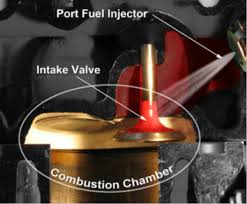
But now the DI injection fuel is introduced directly into the combustion chamber at 2000 PSI plus:
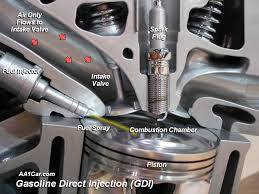
Now since there is no fuel ever touching the valves, this is the issue all DI engines experience:

So the only way to prevent this is to stop all oil from ingesting.

But now the DI injection fuel is introduced directly into the combustion chamber at 2000 PSI plus:

Now since there is no fuel ever touching the valves, this is the issue all DI engines experience:

So the only way to prevent this is to stop all oil from ingesting.
#29
I was speculating from some articles I read on the web and because I have not seen a "official" spec for the coyote engine in the 2015. Rumors were DI and 470hp. From what I have read the engine has the features for it.
The whole reason I mentioned this was of the earlier post showing DI and how it does not wet the valves.
The whole reason I mentioned this was of the earlier post showing DI and how it does not wet the valves.
#30
I was speculating from some articles I read on the web and because I have not seen a "official" spec for the coyote engine in the 2015. Rumors were DI and 470hp. From what I have read the engine has the features for it.
The whole reason I mentioned this was of the earlier post showing DI and how it does not wet the valves.
The whole reason I mentioned this was of the earlier post showing DI and how it does not wet the valves.
#32
Anyone wanting technical data on anything crankcase evacuation/PCV system related, just ask. From each function performed, the impact of oil present in the combustion chamber, to a tutorial on todays Direct Injection systems vs old Port injection. from SAE white papers and scientific studies to plain explanations that can be easily understood. And most are going to be very surprised as 95% plus of the catchcans on the market are at best 20-30% effective period, and although most are under the assumption the can they are using is doing a good job, (and any can is better than no can) unless your stopping all, or nearly all the oil you have the same issues occurring that your trying to prevent.
The ultimate system is a belt driven vacuum pump with a vac relief valve on the opposite bank as the vac is drawn, but they wont live on the street more than a few thousand miles before they need rebuilding due to vane, bearing, shaft failures/wear.
The functions of proper crankcase evacuation are perhaps the most misunderstood on vehicles today, especially performance applications.
I'll start with this training video on understanding the basics of proper crankcase evacuation:
PCV VALVE OPERATION - YouTube
The ultimate system is a belt driven vacuum pump with a vac relief valve on the opposite bank as the vac is drawn, but they wont live on the street more than a few thousand miles before they need rebuilding due to vane, bearing, shaft failures/wear.
The functions of proper crankcase evacuation are perhaps the most misunderstood on vehicles today, especially performance applications.
I'll start with this training video on understanding the basics of proper crankcase evacuation:
PCV VALVE OPERATION - YouTube
#33
Unless you know how much is going through in its entirety, it would be impossible to assign a percentage to what cans are capturing. To say that bobs catches 3oz in 5k for example is only 20% would mean that 15oz is actually passing through. Not only would that total amount be again near impossible to quantify, but I seriously doubt we are loosing 1/2 a qt. through the PCV from vapors.
So where the RX might do a good job, the sales pitch and "figures" are completely bogus IMO.
Last edited by typesredline; 7/7/14 at 08:47 AM.
#34
First of all, I am not selling anything here. I have over 40 years working in the industry starting in 1974 with GM and have done OEM tier 1 designs that have been implemented by the big 3. I am sharing only data and facts that are easily verified, that's why any test data should always be done by a independent 3rd party as all the public tests show as you are correct that there will always be assumed bias.
And that amount and more has been shown in the independent tests if you read through the entire test to see all amounts documented. No sales pitch, and the figures are not from me/us, they are from those that challenged us to the test and were already using another can they assumed was doing a great job. We only require them to follow the rules set out to be fair for the can they are testing against (must be done in reverse, must measure all caught and drained, etc.).
- Final totals:
UPR - 17cc
RX - 67cc
The RX can caught 4 times the amount the UPR can caught, after the UPR can removed what it
could. I said from the beginning I would be surprised if the RX can could pull 10% of what the UPR
caught, since it was second in line. If someone told me it would catch an equal amount I would have
said BS. For it to catch 4 times what the UPR can caught is unreal.
And done in reverse (again, we had nothing to do with the test, it was a UPR user that conducted it in challenging us much as you are here)
- Phase 2 Totals:
RX - 35.5cc
UPR - 1.75cc
- Other tidbits include the 'first in line' RX can caught 95% of the total volume. The exit hoses were
very clean from both cans. The last few tanks of gas have produced slightly higher than my normal
MPGs, but it's too early to tell on that
We can tell you our results of the Bob's test, but that will have little credibility compared to an independent test performed by someone already running and totally happy with it, and that is whats underway now.
Also the reason I go into great detail on how anyone can test any catchcan for effectiveness themselves and no one needs blindly follow anyone's claims. Far better to do simple testing ones self. Same with the detonation and fuel economy issues related to any oil ingestion. Easy for anyone to document the effects with logging KR and simple tracking of fuel economy.
Now on to intake valve coking with DI. The Coyote we cannot confirm DI for 2015, but all GM V8's are now DI for 2015...in fact every GM is. The Ford's it is the EcoBoost series of engines that are all DI, but they have stated they are also moving all to DI in the near future, so time will tell.
But any that are not aware of the intake valve coking issues, every auto maker in the world has been battling the issue, including 4 stroke motorcycles, snow mobiles, and out boards:
https://www.google.com/search?q=Inta...ction&tbm=isch
Now, on to catchcans. Most cans are no more than empty cans with fittings attached:
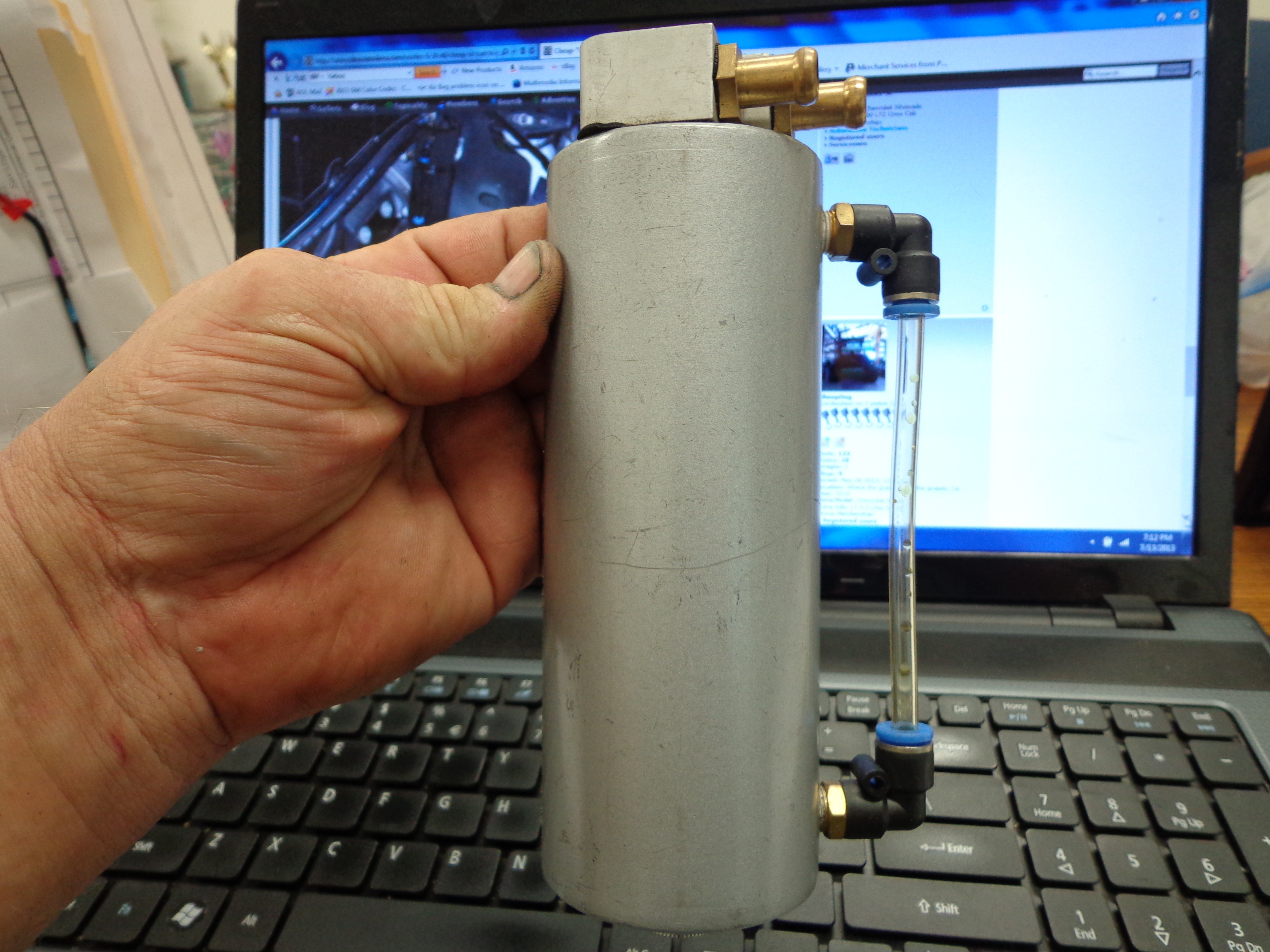
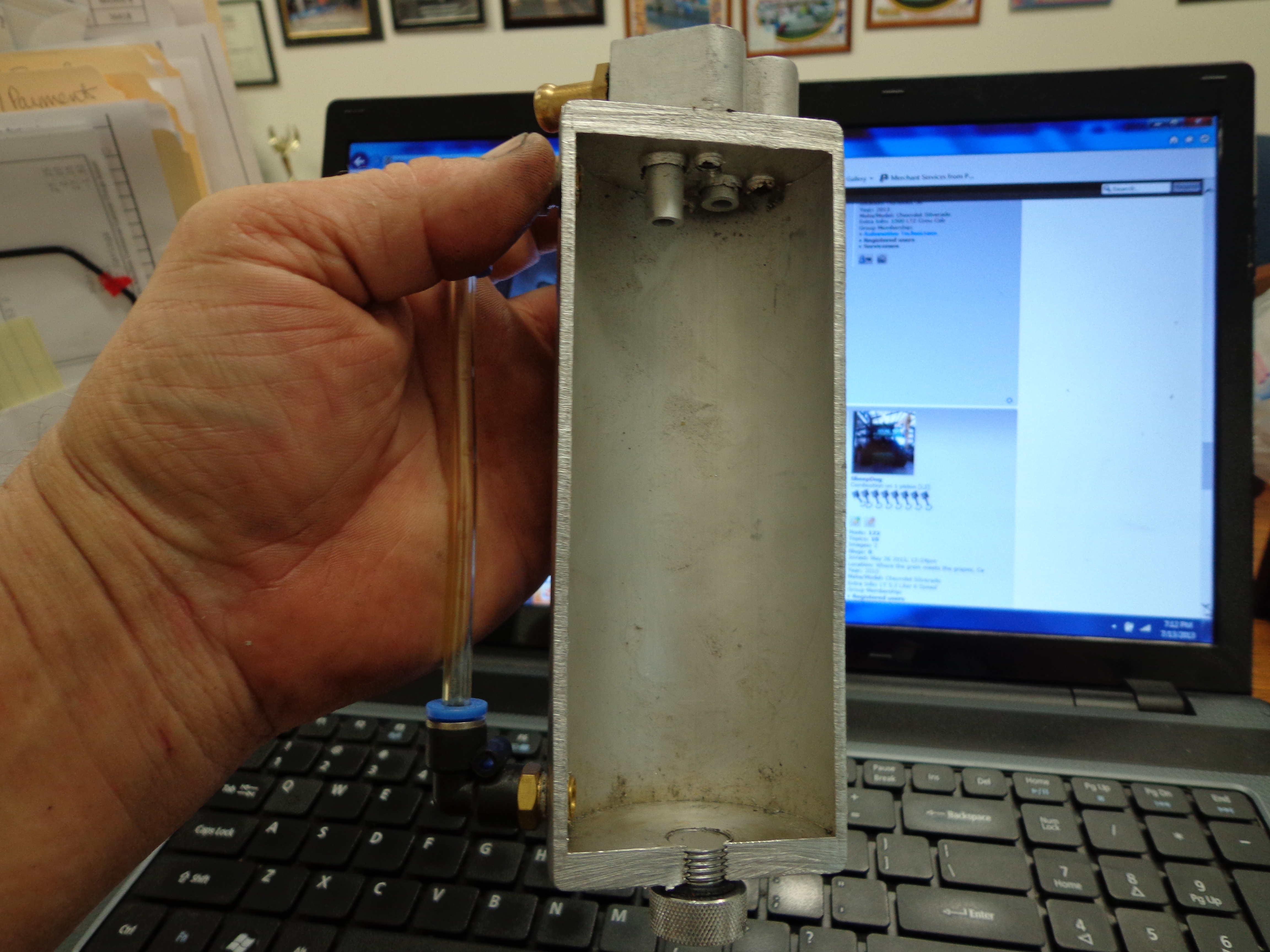
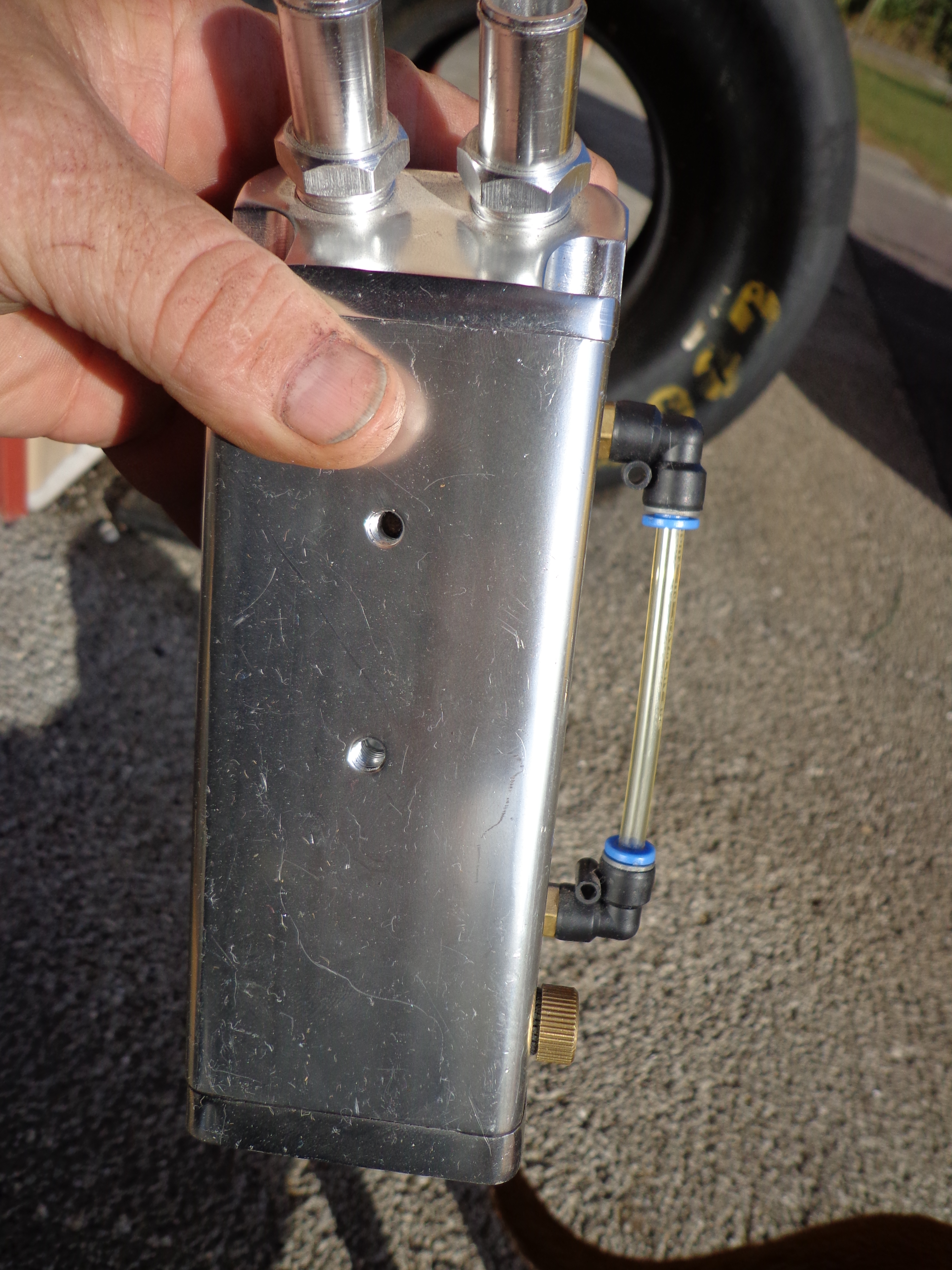
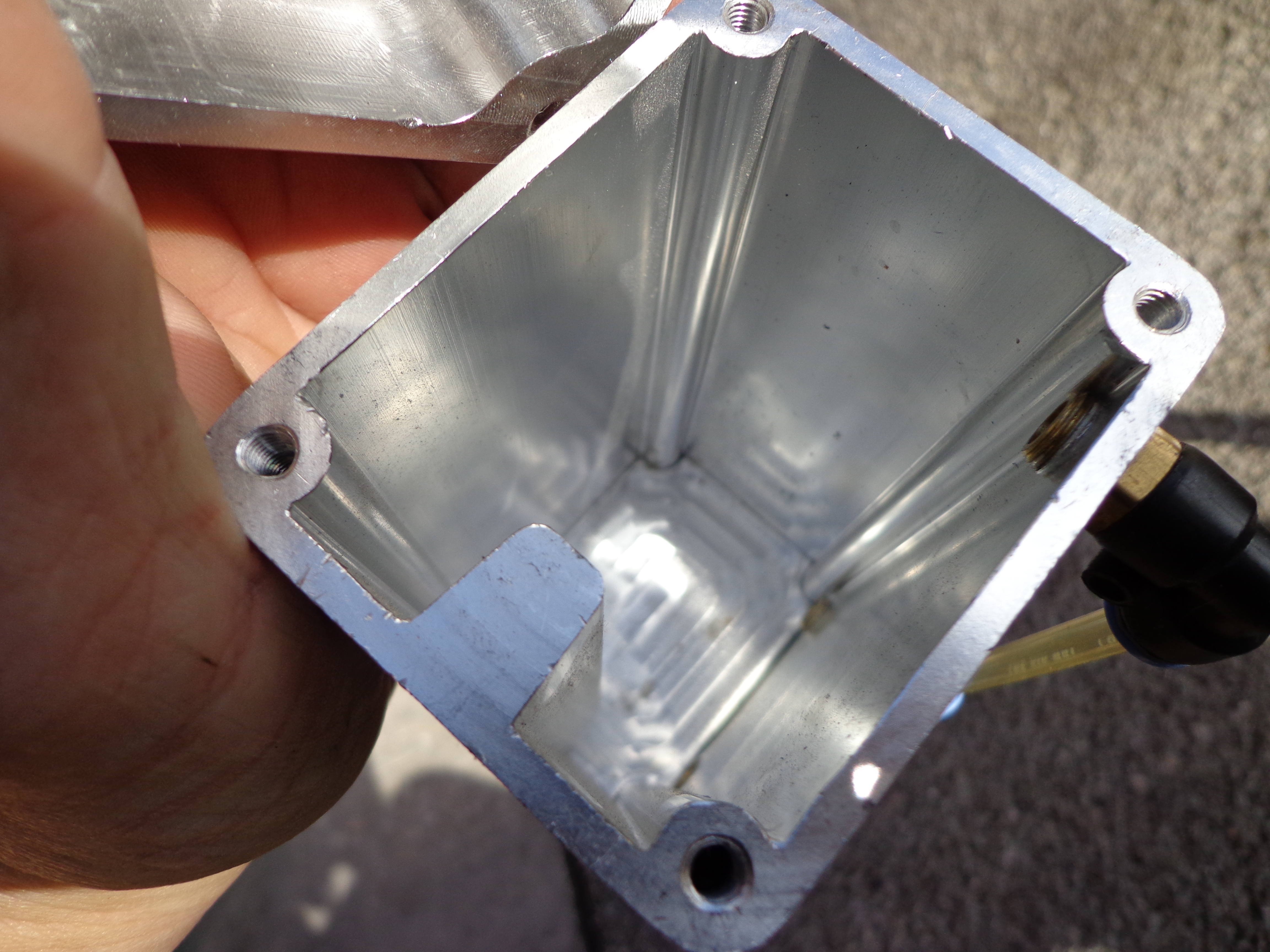

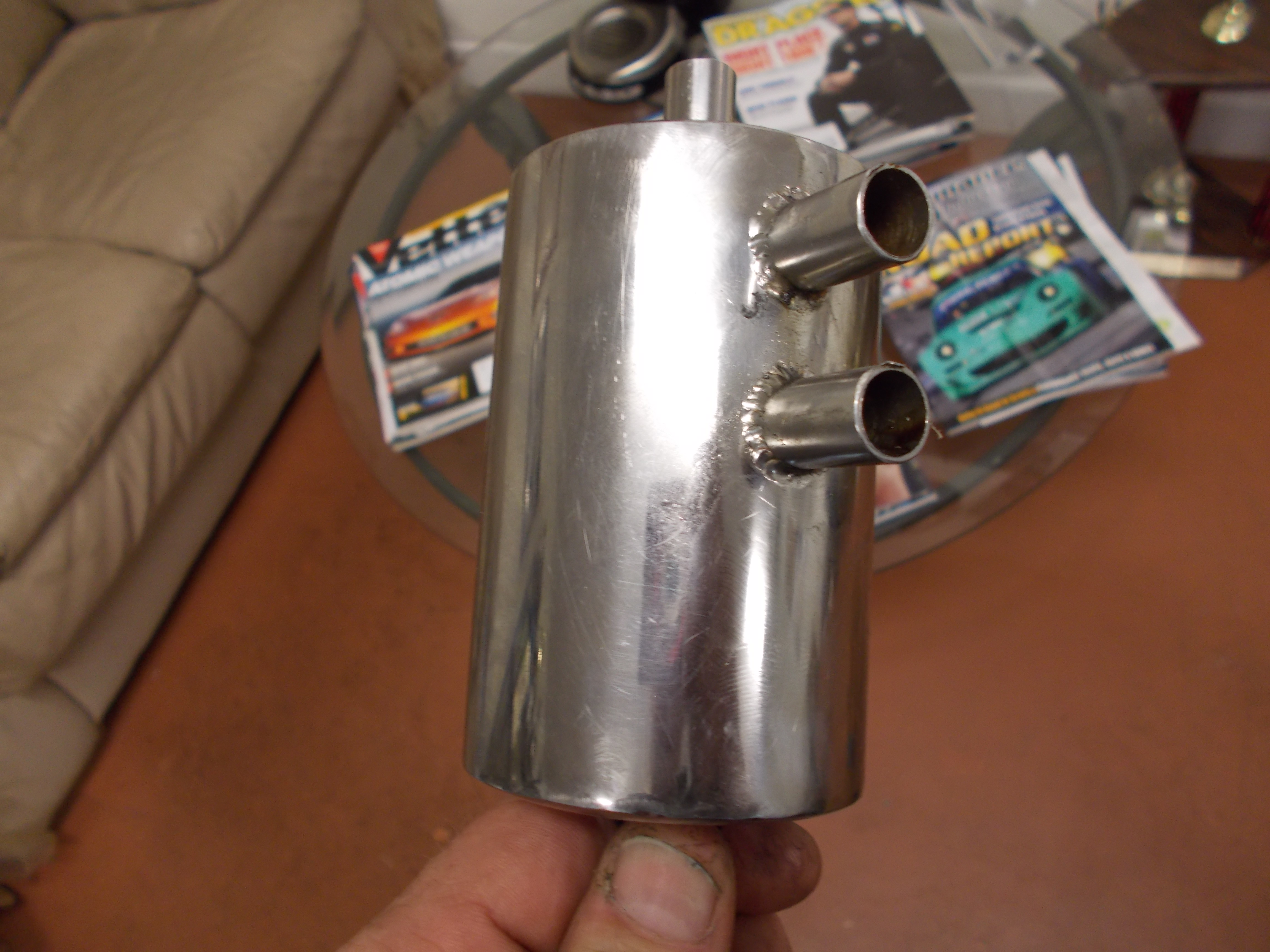
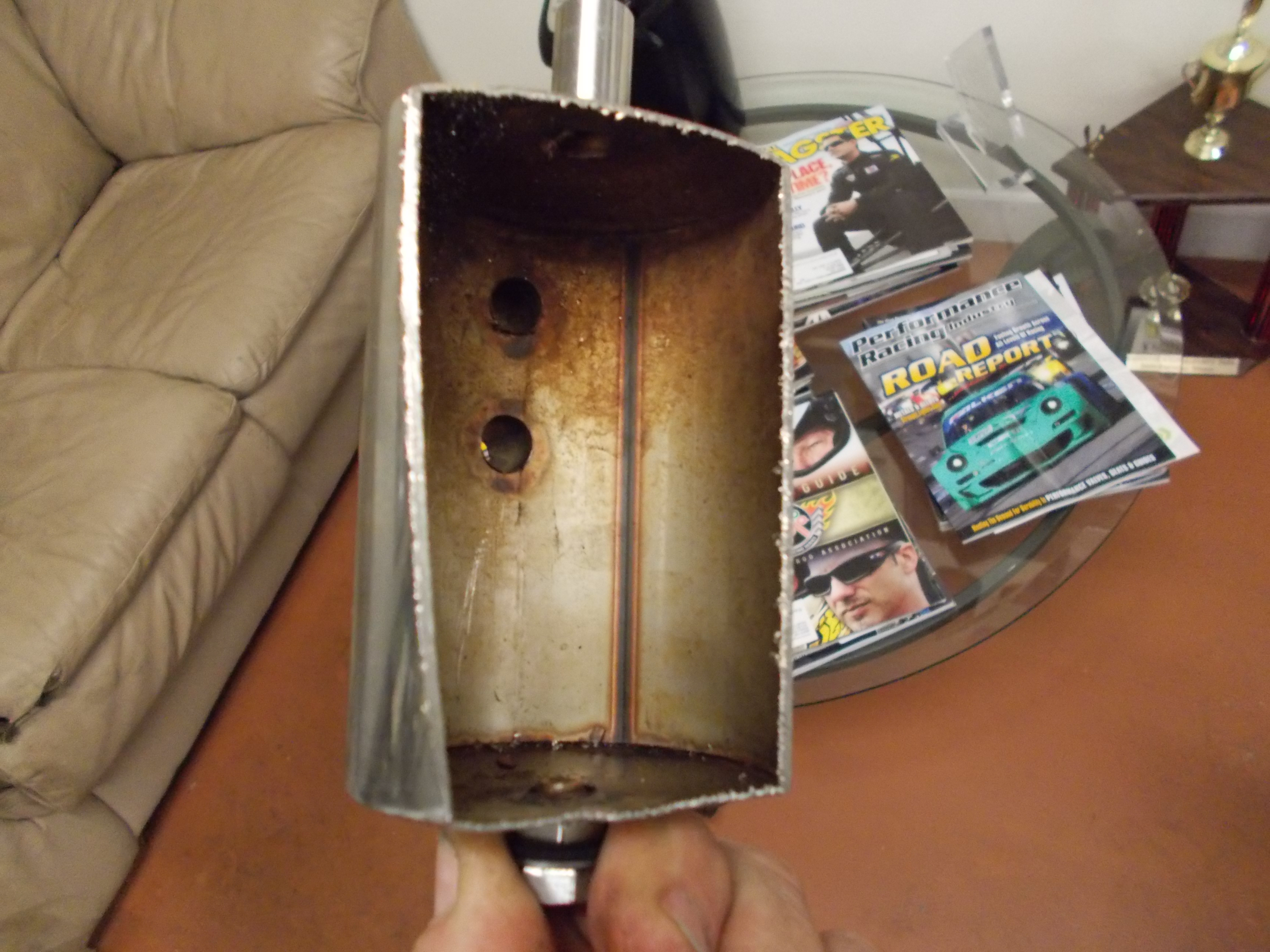
So as you can see, the majority of the vapors just do a U turn right back out and only a small amount of condensed oil is ever caught.
Then this style which uses plastic resin to bond the pieces together insulates and prevents condensing...as well as simple 2 fittings that vapors U turn in and out:
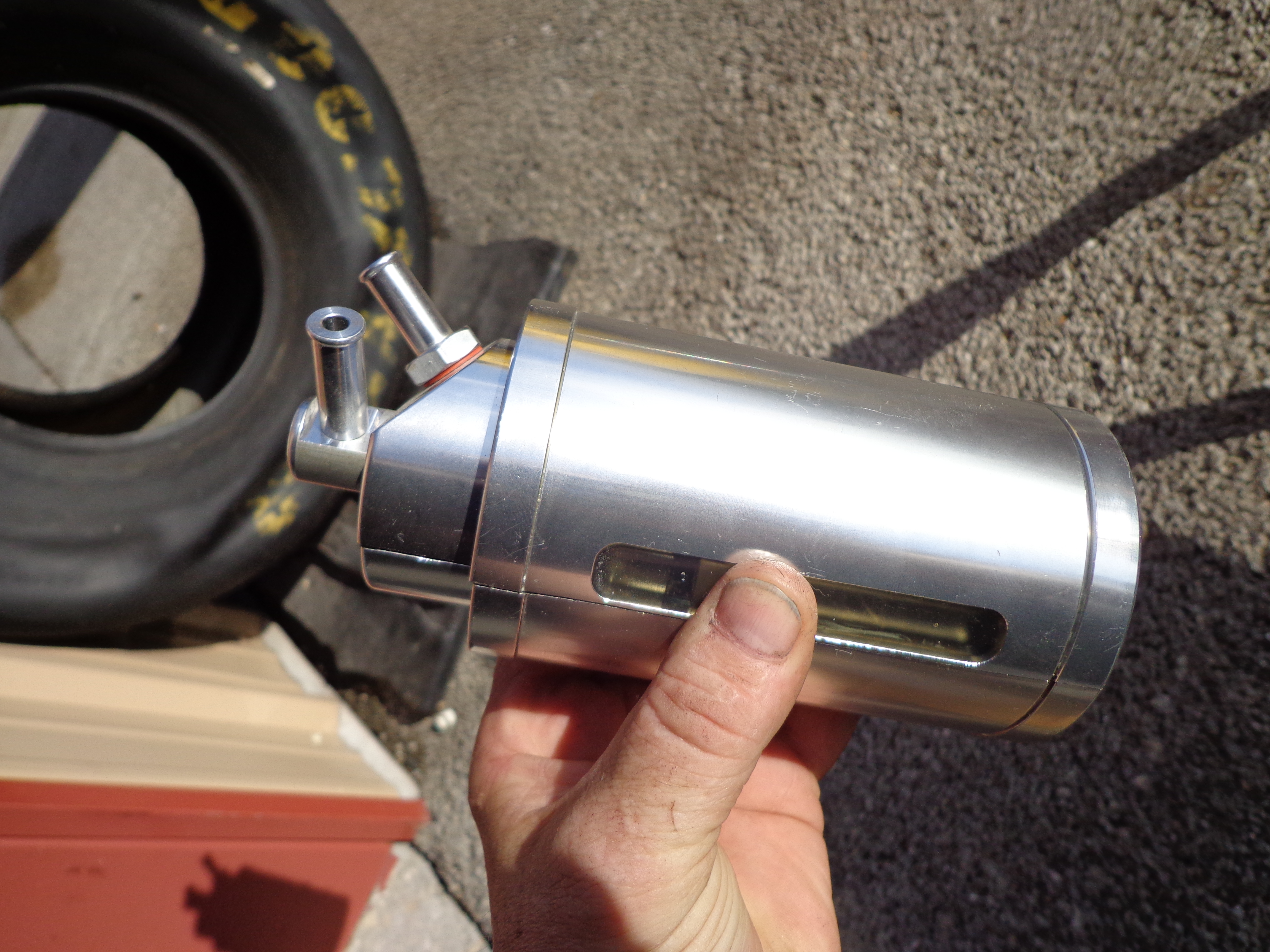
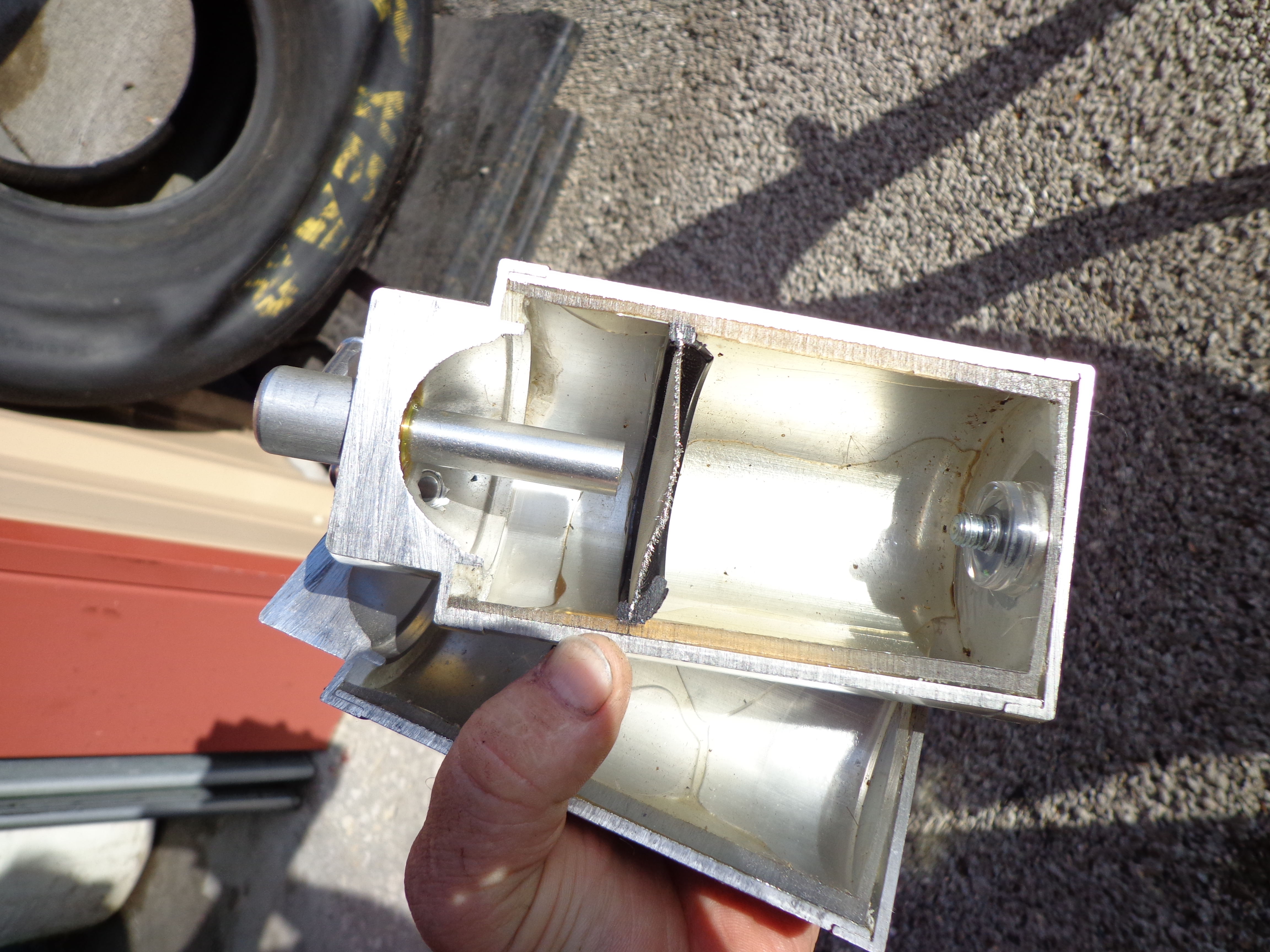
And then the ones with some coalescing media in them but far to small to prevent pull-through from the Bernoulli effect:

and even those with media against the outlet (no designated inlet or outlet, you can do this test at home to emulate: Take a wet washcloth, place to mouth and suck on it...what happens? Now imagine 100 times the suction and CFM of flow of a PCV system and you quickly see the flaw in design that allows so much pull-through:
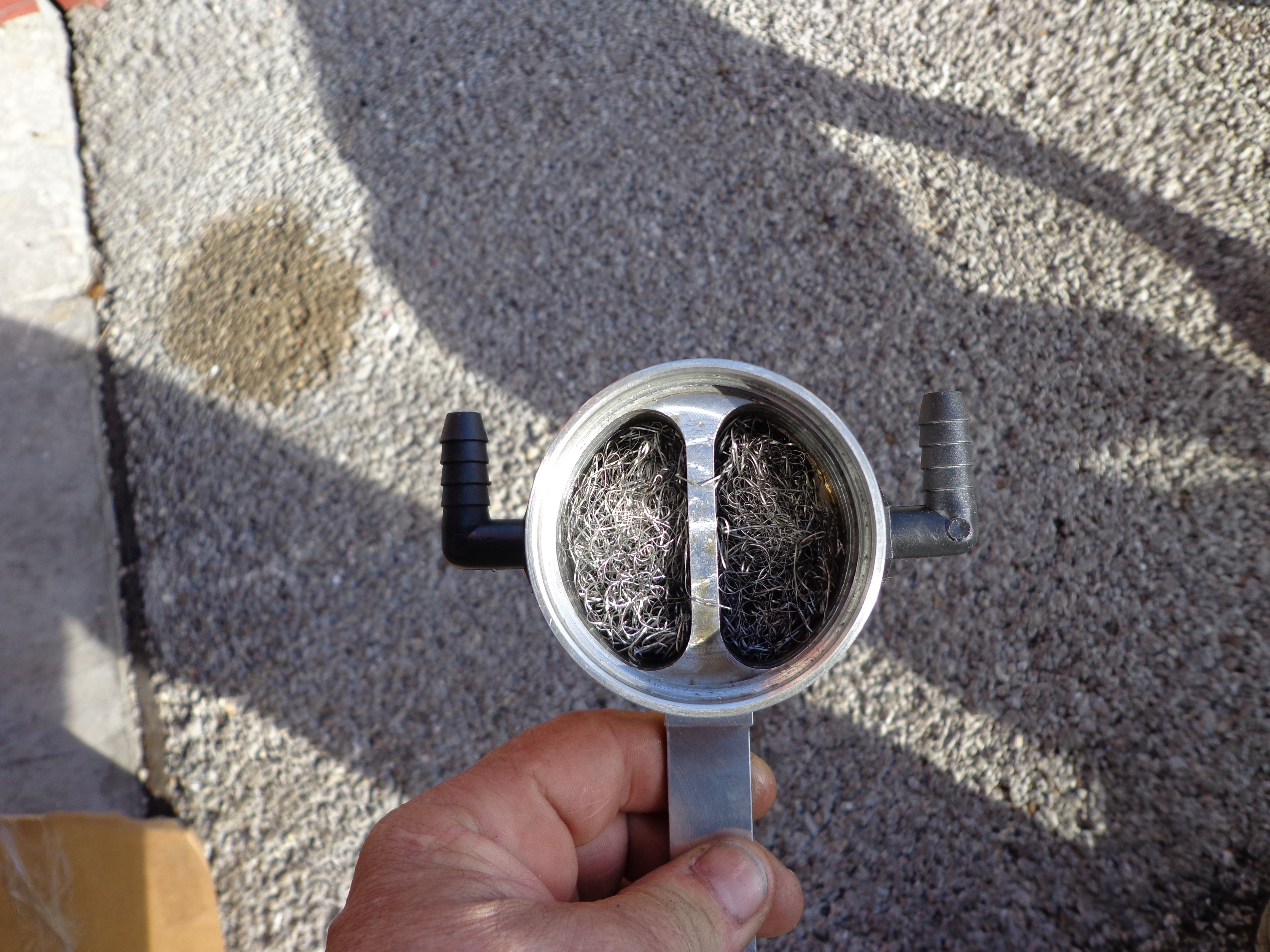
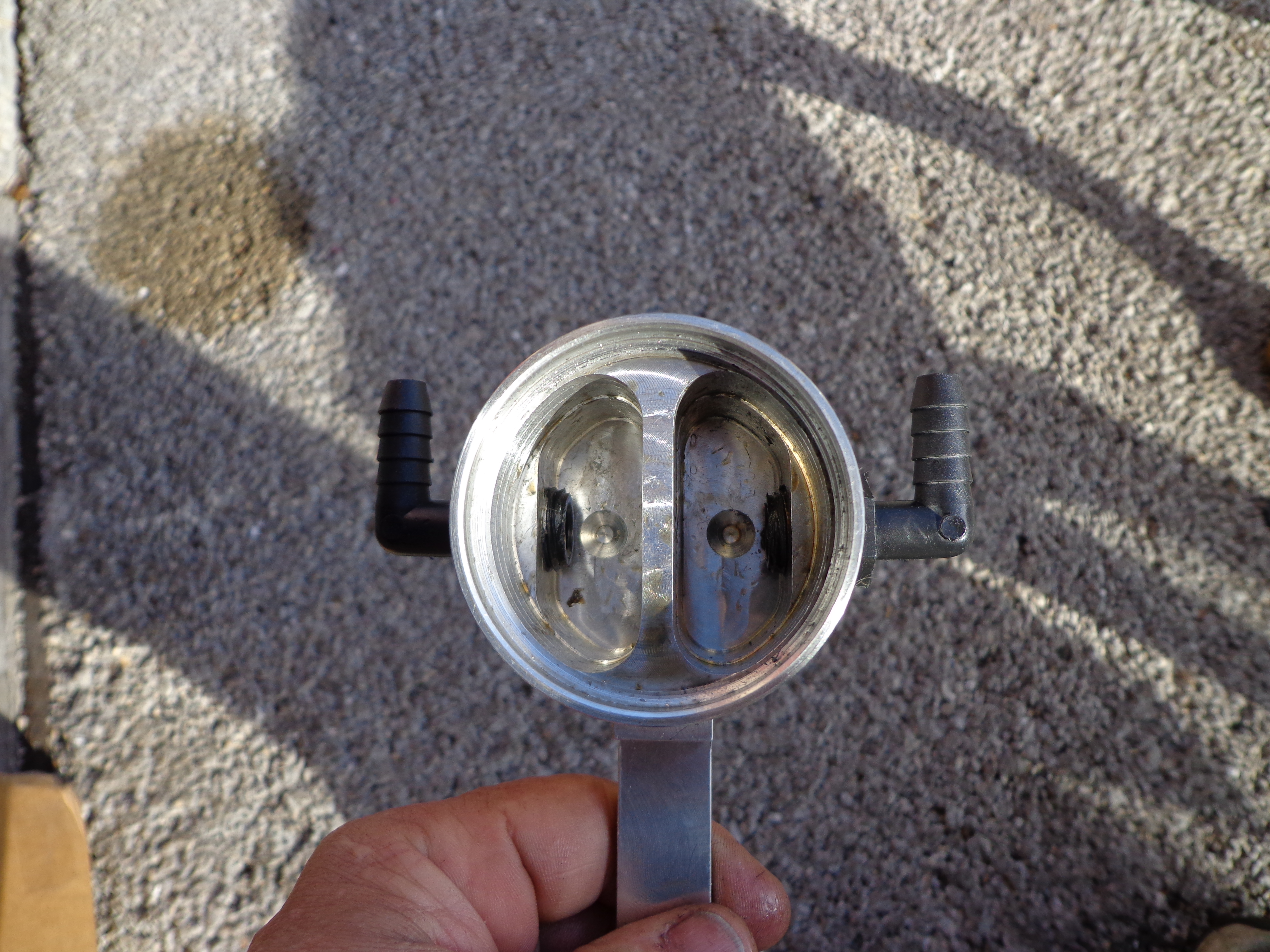
The average PCV system operates at between 450 CFM (4 cylinder) to 650 CFM of flow, and that is a substantial amount. To prevent any liquid from being pulled through the can must have nearly 1 qt of internal capacity and the outlet must be 3" plus from any oil droplets to prevent excessive pull through. Take that the average can is 1.5-3.5 oz capacity, that makes the small ones impossible no matter the media, etc. inside from allowing more to pass through than they catch.
Only 3 other cans have tested to show 80% plus effectiveness, and they are the SMC (Saiku Micchi), Elite E2, and the Apex (copy of the E2).
And that is dozens tested over the past 13 years. typesredline, It will be easy for you to test and disprove any of this....much more accurate than assumptions. And if you are running a can that allows more to pass through than it catches, then very little is accomplished as far as eliminating the issues oil ingestion in the intake air charge causes.
Not here to offend or fight with anyone, just sharing facts most would never look into without this presented.
:thumbsup:
And that amount and more has been shown in the independent tests if you read through the entire test to see all amounts documented. No sales pitch, and the figures are not from me/us, they are from those that challenged us to the test and were already using another can they assumed was doing a great job. We only require them to follow the rules set out to be fair for the can they are testing against (must be done in reverse, must measure all caught and drained, etc.).
- Final totals:
UPR - 17cc
RX - 67cc
The RX can caught 4 times the amount the UPR can caught, after the UPR can removed what it
could. I said from the beginning I would be surprised if the RX can could pull 10% of what the UPR
caught, since it was second in line. If someone told me it would catch an equal amount I would have
said BS. For it to catch 4 times what the UPR can caught is unreal.
And done in reverse (again, we had nothing to do with the test, it was a UPR user that conducted it in challenging us much as you are here)
- Phase 2 Totals:
RX - 35.5cc
UPR - 1.75cc
- Other tidbits include the 'first in line' RX can caught 95% of the total volume. The exit hoses were
very clean from both cans. The last few tanks of gas have produced slightly higher than my normal
MPGs, but it's too early to tell on that
We can tell you our results of the Bob's test, but that will have little credibility compared to an independent test performed by someone already running and totally happy with it, and that is whats underway now.
Also the reason I go into great detail on how anyone can test any catchcan for effectiveness themselves and no one needs blindly follow anyone's claims. Far better to do simple testing ones self. Same with the detonation and fuel economy issues related to any oil ingestion. Easy for anyone to document the effects with logging KR and simple tracking of fuel economy.
Now on to intake valve coking with DI. The Coyote we cannot confirm DI for 2015, but all GM V8's are now DI for 2015...in fact every GM is. The Ford's it is the EcoBoost series of engines that are all DI, but they have stated they are also moving all to DI in the near future, so time will tell.
But any that are not aware of the intake valve coking issues, every auto maker in the world has been battling the issue, including 4 stroke motorcycles, snow mobiles, and out boards:
https://www.google.com/search?q=Inta...ction&tbm=isch
Now, on to catchcans. Most cans are no more than empty cans with fittings attached:







So as you can see, the majority of the vapors just do a U turn right back out and only a small amount of condensed oil is ever caught.
Then this style which uses plastic resin to bond the pieces together insulates and prevents condensing...as well as simple 2 fittings that vapors U turn in and out:


And then the ones with some coalescing media in them but far to small to prevent pull-through from the Bernoulli effect:

and even those with media against the outlet (no designated inlet or outlet, you can do this test at home to emulate: Take a wet washcloth, place to mouth and suck on it...what happens? Now imagine 100 times the suction and CFM of flow of a PCV system and you quickly see the flaw in design that allows so much pull-through:


The average PCV system operates at between 450 CFM (4 cylinder) to 650 CFM of flow, and that is a substantial amount. To prevent any liquid from being pulled through the can must have nearly 1 qt of internal capacity and the outlet must be 3" plus from any oil droplets to prevent excessive pull through. Take that the average can is 1.5-3.5 oz capacity, that makes the small ones impossible no matter the media, etc. inside from allowing more to pass through than they catch.
Only 3 other cans have tested to show 80% plus effectiveness, and they are the SMC (Saiku Micchi), Elite E2, and the Apex (copy of the E2).
And that is dozens tested over the past 13 years. typesredline, It will be easy for you to test and disprove any of this....much more accurate than assumptions. And if you are running a can that allows more to pass through than it catches, then very little is accomplished as far as eliminating the issues oil ingestion in the intake air charge causes.
Not here to offend or fight with anyone, just sharing facts most would never look into without this presented.
:thumbsup:
#35
I just want to be clear that I'm not doing this test to try and sell anyone anything. I'm not affiliated with RX or any company. I'm just a consumer that wants to try and use the best product out there. I usually do a ton of research on pretty much any product that I plan on buying because I want to get the best for the money spent.
When I was offered a chance to test what some people claim is one of the best catch cans out there against what a lot of people in the Mustang world claim is the best, I jumped on it because I want to know which one is better and doing this test, I can see it first hand.
Just for the record, I really like the Bob's can and hope it does well.
Wayne
When I was offered a chance to test what some people claim is one of the best catch cans out there against what a lot of people in the Mustang world claim is the best, I jumped on it because I want to know which one is better and doing this test, I can see it first hand.
Just for the record, I really like the Bob's can and hope it does well.
Wayne
#36
I just want to be clear that I'm not doing this test to try and sell anyone anything. I'm not affiliated with RX or any company. I'm just a consumer that wants to try and use the best product out there. I usually do a ton of research on pretty much any product that I plan on buying because I want to get the best for the money spent.
When I was offered a chance to test what some people claim is one of the best catch cans out there against what a lot of people in the Mustang world claim is the best, I jumped on it because I want to know which one is better and doing this test, I can see it first hand.
Just for the record, I really like the Bob's can and hope it does well.
Wayne
When I was offered a chance to test what some people claim is one of the best catch cans out there against what a lot of people in the Mustang world claim is the best, I jumped on it because I want to know which one is better and doing this test, I can see it first hand.
Just for the record, I really like the Bob's can and hope it does well.
Wayne
And huge thanks to the Tuner Boost folks for offering to let me use one of their products for testing.
#37
I'll 2nd this statement - I've been offered the opportunity to run similar testing (comparing to JLT) but in a totally different environment, that being road course driving. Personally, I run ~25 minute sessions and do about 100-140 miles during a 1 day event, with the engine basically between 4000-7000 RPM for the entire time. Not a race, as it's not timed, but it's a heck of a workout for the car. I am very interested in seeing the combined results from my testing over the next couple months compared with Monty's
And huge thanks to the Tuner Boost folks for offering to let me use one of their products for testing.
And huge thanks to the Tuner Boost folks for offering to let me use one of their products for testing.
Hey, that is great. I was hoping they would offer to let you do that type of test. I will be very interested in the results.
Wayne
#38
What cans are you testing? Are you going to test any of the Higher end Cans like Radium or Mishimoto?
I have not heard anyone talk about those so I was just asking.
Great job on the test looking forward to all the Data!!
I have not heard anyone talk about those so I was just asking.
Great job on the test looking forward to all the Data!!

#39
I'm testing the RX catch can against the Bob's Auto Sports can in normal type driving and dmichaels is testing the RX can against the JLT can in a road coarse setting.
I doubt I test either of the cans you mention. It takes awhile to do a test like this plus RX provided us with cans to test. I don't know if those two manufacturers would do that.
Wayne
#40
Both the latest Mishimoto and the radium have been tested like this as well, and neither approached the 80% effectiveness that we use as a threshold to recommend. The only ones that have to date are the SMC, the ELite E2, and the Apex.
They are both beautiful well machined and finished units, very attractive in appearance, and the dip stick of the Radium is a cool feature, but neither take into consideration all 4 of the scientific principals needed to prevent excess oil pull-through. Anyone with one can easily do a simple test by installing a clear glass inline fuel filter (not a plastic one) between the can outlet and the IM vacuum barb to see how quickly it becomes saturated with oil passing through. This wont tell the percentage of effectiveness, but will quickly, for about $10 show how quickly they let oil pass through.
Only a few cans have really taken into consideration the flow dynamics of vapors and liquids into the designs. Cans like these two you can clearly see alot of effort went into design, etc. but no matter how expensive, or how good they look, unless all 4 principals are taken into consideration, it is impossible to make a can that will do much better than 50-60% efficiency. The only 100% effective systems are centrifuge style and they are $2,000-$20,000 and above depending on the application. This challenge, has been in place for years, and most that take it drop out after a week or so when they see how drastic of a difference there really is and are not willing to share the results. We know of no other company that does this.
We were involved with the University of Maine's Engineering departments testing and development as well as several others.
We have no gain by posting results that show the several other effective cans either, we just put the info out there for consumers to try on their own and get an understanding on how cans work, and how and why some do far better than others. Can price has no impact on results either....and we have even seen some putting this concentrated mixture of oil and damaging compounds BACK into the crankcase!!!! That is how misunderstood the PCV system is today. Most that even think of it only are aware of the crankcase pressure relief function, and not the critical evacuation function.
And, for a non-emissions application, a belt driven vacuum pump is by far the best, most effective....but on the street they don't last more than a few thousand miles before the pump needs rebuilt.
All good questions so far, keep them coming and try and be specific as far as technical questions on any of the detrimental effects of oil ingestion, both DI and non-DI, forced induction especially as this is where we see the most common misunderstandings, and most have implemented just breathers to release pressure and are allowing all the damaging combustion by-products to remain and accumulate in the crankcase contaminating the engine oil and greatly increasing wear and shortening engine life.
Tons of info available, just ask & I'll do my nest to answer and also can provide tons of SAE whitepapers, studies, scientific data, etc. if needed.
Cheers!
They are both beautiful well machined and finished units, very attractive in appearance, and the dip stick of the Radium is a cool feature, but neither take into consideration all 4 of the scientific principals needed to prevent excess oil pull-through. Anyone with one can easily do a simple test by installing a clear glass inline fuel filter (not a plastic one) between the can outlet and the IM vacuum barb to see how quickly it becomes saturated with oil passing through. This wont tell the percentage of effectiveness, but will quickly, for about $10 show how quickly they let oil pass through.
Only a few cans have really taken into consideration the flow dynamics of vapors and liquids into the designs. Cans like these two you can clearly see alot of effort went into design, etc. but no matter how expensive, or how good they look, unless all 4 principals are taken into consideration, it is impossible to make a can that will do much better than 50-60% efficiency. The only 100% effective systems are centrifuge style and they are $2,000-$20,000 and above depending on the application. This challenge, has been in place for years, and most that take it drop out after a week or so when they see how drastic of a difference there really is and are not willing to share the results. We know of no other company that does this.
We were involved with the University of Maine's Engineering departments testing and development as well as several others.
We have no gain by posting results that show the several other effective cans either, we just put the info out there for consumers to try on their own and get an understanding on how cans work, and how and why some do far better than others. Can price has no impact on results either....and we have even seen some putting this concentrated mixture of oil and damaging compounds BACK into the crankcase!!!! That is how misunderstood the PCV system is today. Most that even think of it only are aware of the crankcase pressure relief function, and not the critical evacuation function.
And, for a non-emissions application, a belt driven vacuum pump is by far the best, most effective....but on the street they don't last more than a few thousand miles before the pump needs rebuilt.
All good questions so far, keep them coming and try and be specific as far as technical questions on any of the detrimental effects of oil ingestion, both DI and non-DI, forced induction especially as this is where we see the most common misunderstandings, and most have implemented just breathers to release pressure and are allowing all the damaging combustion by-products to remain and accumulate in the crankcase contaminating the engine oil and greatly increasing wear and shortening engine life.
Tons of info available, just ask & I'll do my nest to answer and also can provide tons of SAE whitepapers, studies, scientific data, etc. if needed.
Cheers!




 lol interesting....
lol interesting....